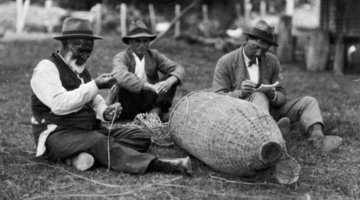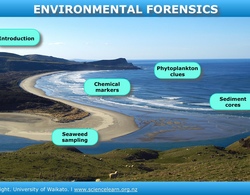

People like to live near estuaries. In pre-European times, estuaries were favourite places for Māori to gather – particularly to harvest and enjoy kaimoana. Today, there are major settlements ...
READ MORE

Position: Principal Scientist – NIWA Coasts and Estuaries, Freshwater. Field: Coastal and Estuarine Physical Processes. Andrew Swales is a scientist and group manager with NIWA. His work involves ...
READ MORE

NIWA’s research vessel the Tangaroa went on an 8-week voyage to the Ross Sea to survey the marine environment and explore biodiversity in the region. The journey from February until mid-March ...
READ MORE

In this activity, students become aware of the importance of estuaries. They identify some possible impacts on estuaries and possible actions that can be taken to protect them. By the end of this ...
READ MORE

In this activity, students explore Māori perspectives concerning estuaries. By the end of this activity, students should be able to: explain how a Māori legend can show aspects of Māori thinking ...
READ MORE

Environmental DNA (eDNA) has revolutionised how scientists monitor ecosystems and identify the species that live in them. eDNA is genetic material found in hair, scales, skin and even faeces ...
READ MORE

Come and visit Aotearoa New Zealand’s underwater world in this online citizen science project. Discover, count and identify unique fish species that live within our marine reserves ...
READ MORE

Did you know that 80% of marine litter globally starts life on land? Mizuiku Upstream Battle is a citizen science programme run by Keep New Zealand Beautiful. It aims to get volunteers across ...
READ MORE

This comprehensive worldwide online citizen science (OCS) project collates bird species, numbers, locations and times of sightings into a large database. You can create a class as a user and, by ...
READ MORE

The rocky shore is a popular topic in primary school science. Below are some Science Learning Hub resources for primary teachers related to the rocky shore in the Living World strand of the New ...
READ MORE

With 75% of New Zealanders living within 10 km of the coast, many students will be familiar with estuaries. In scientific terms, estuaries are the interface between the land and the sea – the ...
READ MORE

In ecological terms, wetlands are ecotones – transitional habitats between terrestrial and aquatic ecosystems. They provide a mixture of habitats and are capable of supporting a diverse range of ...
READ MORE
Andrew Swales talks about the big issues concerning estuaries, such as sedimentation, and what can be done to protect them. Proper management of estuaries requires an integrated management ...
READ MORE
Stacey Mulgrew, the Land Information representative gives a tour of the ship. Stacey starts on deck and explains the decks of the ship using the ship’s deck plans. She shows where one of the ...
READ MORE
Paul McNabb of the Cawthron Institute in Nelson explains how they got involved with the dog deaths on Auckland beaches. He takes us on the journey the scientists went through to identify what ...
READ MORE

Dr Candida Savage explains the clues she collects in estuaries and fiords, to understand how changes in land use affect these environments. Click on the labels to watch the videos for more ...
READ MORE

Explore this interactive diagram to learn more about life in the sea. Click on the different labels to view short video clips or images about different parts of the marine ecosystem. Select here ...
READ MORE

Human actions at sea and on land are putting increasing pressure on the ocean and the species that live there.
READ MORE